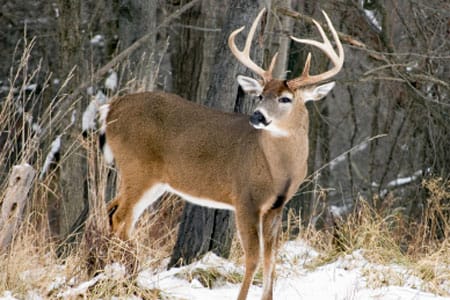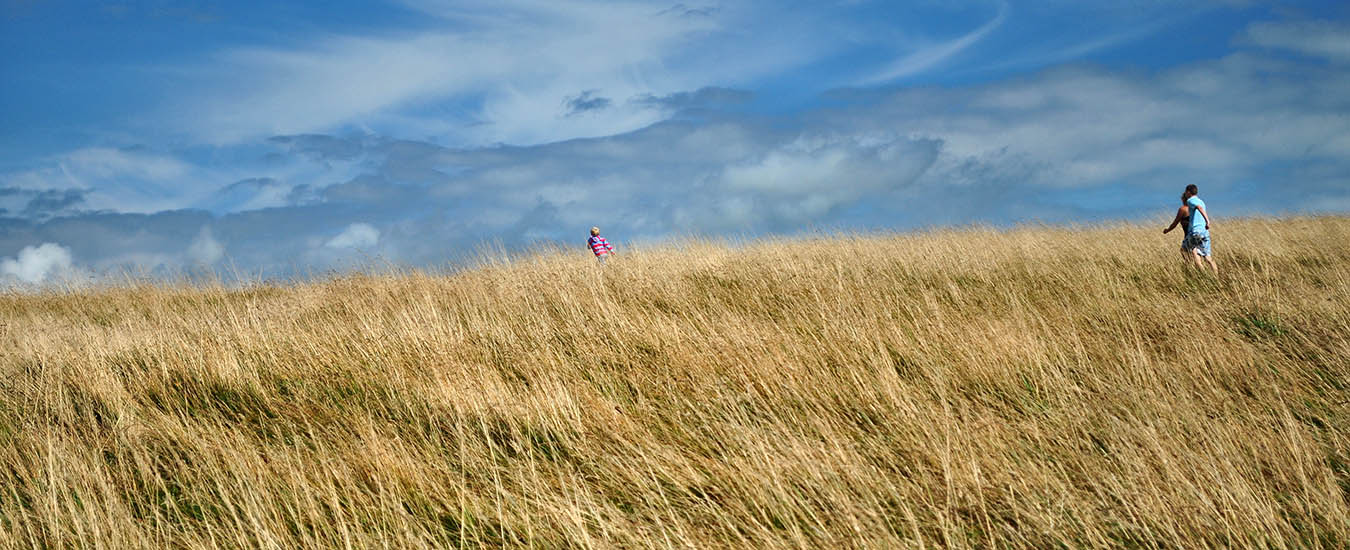The responsible decision NOT to feed deer this winter.
Inevitably, people interact with wildlife: rural folks, obviously, more than townies.
And, just as inevitably, we want to feed wild critters, particularly during the cold months.
But the uncomfortable truth is that when they interact with humans, they frequently do so at their peril. Too often we inadvertently do them or the wider environment harm, while intending the reverse.
First of all, we tend to be selective in our patronage. How many of us set out to feed garter snakes and field mice? Don't they get hungry? Why do we consider hummingbirds fascinatingly beautiful and dragonflies, which can also hover in flight and impress with their speed and agility, merely ugly bugs? We revere those bald eagles that gather in unnatural numbers every winter to be fed from farms in the Annapolis Valley of Nova Scotia - not realizing that these same eagles then decimate the ducklings in nearby lakes every spring (some clutches have zero survival).
Why do we feed songbirds, while at the same time going to great lengths to discourage equally hungry squirrels from feeding? For the joy of watching them, of course. They're colourful, musical, charming and delightful. And so we set up bird feeders in open, exposed areas in order to have a good view - and where predators like hawks, owls and cats can have a field day.

The common Sunday afternoon exercise of feeding ducks in the park, formerly accepted as completely benign, is now discouraged, even outlawed in many jurisdictions, simply because "free" and often inappropriate food - like white bread - has been found to be harmful to wild waterfowl in a number of ways.
Doing a double-take
It may seem counter-intuitive to not feed deer in the middle of winter, when natural food sources seem scarce. However, New York, Pennsylvania and Michigan have already banned feeding them, and several other states, as well as Ontario and the western provinces, are considering it. Here are six reasons why feeding deer is a bad idea.
- In northern climes, deer "yard up" in winter, sticking close to an area offering both food and shelter - where they beat down regular paths through the snow between the two areas. When "free" food is offered, the yarded herd will concentrate in a smaller area and become highly dependent on a single unnatural food source. In such a single food source situation, stronger animals will push the weak aside, and those animals will be denied food and starve. Wild deer that are dispersed in a natural wintering habitat rarely exhibit this behaviour, allowing the younger deer an opportunity to feed.
- The dependence situation created can also cause deer to abandon their natural tendency to conserve energy in winter, with fatal consequences if the food source suddenly dries up (during that southern vacation, or if the householder finds it too expensive to do it properly, at about $60 per deer per four-month season).
- Deer, so concentrated, also become more vulnerable to the spread of disease, predation, harassment by domestic dogs, and highway collisions.
- And, speaking of disease, the bovine tuberculosis and chronic wasting disease outbreaks that have decimated wild deer herds in western North America can be exacerbated by deer feeders - uneaten food in the corners of the feeders may facilitate harmful bacterial growth.
- Deer, attracted by a regular free meal, will also help themselves to expensive shrubbery and fruit trees. Their concentrated numbers will hinder the natural regeneration of wild tree species in the vicinity.
- And, too often we offer them the wrong food. In winter, apples just don't cut it - they are like candy to kids. The smell will attract deer, for they clearly enjoy the taste, but the fruit provides virtually no vital nourishment to meet their metabolic needs.
So, care and some basic understanding are warranted to ensure that we avoid unintended consequences.
One of the more tragic examples in recent memory took place in Prince Edward Island when adverse March weather and ice conditions saw hundreds of helpless newborn harp seal pups washed ashore. While biologists were warning local people to let nature take its course, the publicity attracted animal rights' activists who swooped in - complete with the ever - attendant media circus - collected nursing seals (which is actually illegal in Canada without a permit) and inappropriately fed them cows' milk, thereby causing the juvenile animals to die slow, agonizing deaths from nutritional diarrhea.
Whitetail deer (absent in PEI and Newfoundland & Labrador) are another prime example of physically attractive wildlife. Those big, bovine eyes and long eyelashes capture our empathy - but deer also tend to be hurt by our misguided benevolence.
It is now commonly understood by most that a spotted fawn discovered in early summer should be left alone. The days-old animal - camouflaged and scent-free - has not been abandoned, merely left by the doe while she attends nearby, usually out of human sight.
What about feeding deer in winter? Good idea or bad?
Wildlife biologists appear universally opposed to winter feeding of wild deer by individual households.
Southern Canada represents the northern extremity of whitetail deer habitat. This means that during severe winters, particularly those featuring heavy snowfall, significant numbers of weakened deer will perish and significant numbers of pregnant does will absorb or spontaneously abort their fetuses.
As pitiless as this sounds to the only creatures on the planet who live in an artificial environment well insulated from the realities of nature, winter starvation is a natural check on overpopulation - and not only in deer - ensuring the health of the species by survival of only the fittest. It's a tough but effective element of the plethora of natural checks and balances that keep ecosystems in good health.
We're the only species to mess with a very fragile system that has nurtured the planet for eons.
In fall, deer fatten up naturally on beechnuts, acorns, berries and grains. Their physical condition going into winter greatly impacts their chances of surviving it. Young animals and bucks, exhausted following the rut, are most at risk of having insufficient fat reserves. Wintering deer depend on the crowns of mature conifers such as hemlock, spruce, fir, pine, and cedar - and their digestive tracts have adapted to accommodate this seasonal dietary change. Feeding them anything other than a very coarse diet can do them physical harm.
Is winter feeding of wild deer always harmful?
No, it's not. Emergency situations - sustained snow depths of more than 50 centimetres, for instance - do arise where a sudden population crash is imminent, and emergency feeding is appropriate. Consecutive years of harsh winters, especially when they start early, can pose a serious threat to wild deer populations.
Such situations are best handled by professionals, or volunteer organizations operating under professional direction. Hay is the most common food offered, and multi-site placement is carefully chosen away from homes, farms, roads and railway tracks.
What can individuals do?
Lots actually. The loss of adequate wintering habitat is the most serious threat to deer, and forest clearcutting is the most widespread cause of that. Efforts by the public to ensure politicians understand and appreciate that our forests are not tree farms, but valuable natural wildlife habitat in need of protection from over-logging, is far more beneficial to deer than putting a few apples out on the snow.
Those who own woodlots can provide the most benefit by managing their lands to improve deer habitat naturally, and by timing forest management activities to occur during winter, thereby providing browse from tree tops when deer can best use it.
